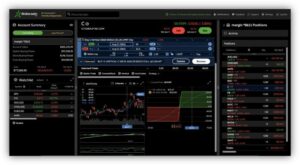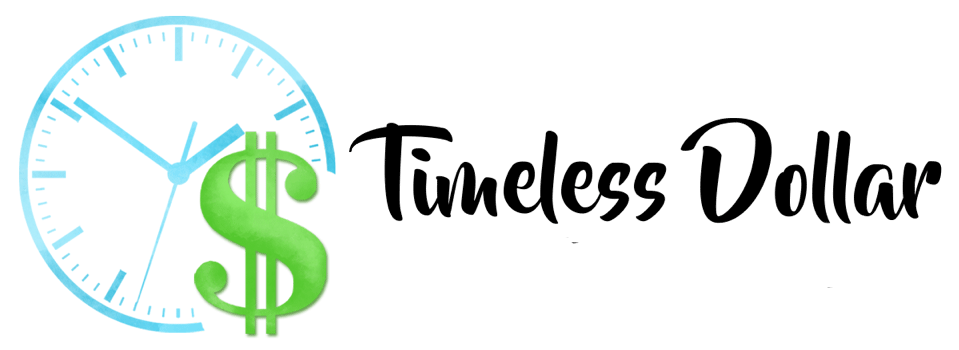Thinkorswim Review 2023
Thinkorswim Review: Is Thinkorswim Right for You?
 For sophisticated investors, TD Ameritrade offers thinkorswim, a powerful set of investment tools oriented specifically at investors who make frequent or complex trades. If you aren’t looking for a semi-professional toolkit, with all of the complexity that entails, then you may find that Thinkorswim is overkill for your trading needs. However, if you work in the most sophisticated ends of the market, then read on to see if thinkorswim is right for you.
For sophisticated investors, TD Ameritrade offers thinkorswim, a powerful set of investment tools oriented specifically at investors who make frequent or complex trades. If you aren’t looking for a semi-professional toolkit, with all of the complexity that entails, then you may find that Thinkorswim is overkill for your trading needs. However, if you work in the most sophisticated ends of the market, then read on to see if thinkorswim is right for you.
Thinkorswim Services and Features
Thinkorswim is a full-feature investment platform offered by TD Ameritrade, which was bought by Schwab in 2020. It complements the firm’s main brand. Where TD Ameritrade’s core platform serves the retail market, thinkorswim is designed to appeal to hard-core investors. This is the kind of platform where searching for a stock not only pulls up its price, but the bid/ask spread, an options chain and an OCO bracket.
As a full service platform, thinkorswim supports all major asset classes. This includes stocks, ETFs, mutual funds, bonds, futures and foreign exchange. It also offers micro cryptocurrency futures.
TD Ameritrade lets investors access the thinkorswim platform through a desktop client, web browser and well-designed in-app trading. The browser-based portal and desktop portals are both excellent ways to use this service, although the desktop offers a greater range of data options and more customizability than its web-based cousin.
Data and customization are the core of thinkorswim’s service, and this is a double-edged sword.
For its target audience thinkorswim offers an enormous range of choices. Unlike many high-sophistication trading platforms it offers a vast array of both technical and fundamental analyses, allowing you to review not only the movements of a given asset but also news about the companies behind those securities. For any given asset you can build out your own trading screen, charting the issues that matter to your own personal strategy. Whether you’re looking for pricing information, volatility or even strategy-based indicators, thinkorswim has a drafting option for that. There are hundreds of possible technical indicators to select from, so you’re almost guaranteed to find one that best suits your trading needs.
Fundamental analysis is best served in the desktop client, which has a range of widgets that include news, analysis, currency maps, Level 2 data and (for the whimsical trader, or just the bored) Tetris. The Level 2 data in particular helps make thinkorswim a useful platform for day traders and other high-speed and high-volume investors.
Complementing these features, thinkorswim supports a full range of complex order types. For equities and derivatives alike, you can set up pre-scripted trades that support a wide range of positions. From basic choices like limits and stops, thinkorswim scales up your choices to timed trades, triggers, conditionals and more on a system that supports up to eight legs. Like the rest of thinkorswim, this can be customized and pre-set. If you have complex trades that you regularly conduct you can build them to be ready at the push of a button.
Finally, thinkorswim supports a full paper trading mode. This means that you can set up a simulated account within the platform and trade with made-up money. This is an excellent opportunity for investors to get more comfortable with the program, learning to use its many (many) tools before putting real money on the line.
Fees: How Much Does thinkorswim Cost?
There are usually four types of fees to look out for when choosing a trading platform. You should look out for these when evaluating any investment or trading service:
- Trading fees. Any fixed charge attached to each trade that you make. This can come in the form of a flat fee or what’s known as the “spread.” This is when your broker charges you based on the difference, if any, between the buying and the selling price of an asset.
- Trading commissions. This is when a broker will charge you a percentage based on the volume or value of each trade.
- Inactivity fees. Any fees that the broker charges you for not trading, such as for keeping money in a brokerage account.
- Non-trading/Other fees. Any form of fee for trading on this platform not covered above. For example, a brokerage might charge you for making deposits into your brokerage account, taking money out of it or signing up for additional services.
Thinkorswim’s price models are in line with most of the market. It charges nothing to trade stocks and ETFs, and options cost $0.65 per contract. Bond and CD trades on thinkorswim’s retail platform cost $1 on secondary transactions. Mutual funds that are not on TD Ameritrade’s extensive no-fee list cost up to $49.95 or – depending on the fund family involved – $75. Forex trades are based on the bid/ask spread between individual currencies, and foreign stocks incur a $6.95 trading fee. Futures and futures options cost $2.25 per trade, plus regulatory and exchange fees. Unlike many sophisticated platforms there is no minimum balance for using thinkorswim, although margin traders will have to maintain one.
TD Ameritrade supports short sales and margin orders. As of February 3, 2023, the base rate for margin orders was 12.75%. Rates vary based on the size of the debit balance. The following table sets out the relevant rates:
| Margin Rates by Debit Balance, Above and Below Base Rate | |||||||||
| Dollar Range | Above/Below Base Rate | Effective Rate | |||||||
| Under $10,000 | 1.25% | 14.00% | |||||||
| $10,000 – $24,999.99 | 1.00% | 13.75% | |||||||
| $25,000 – $49,999.99 | 0.75% | 13.50% | |||||||
| $50,000 – $99,999.99 | – 0.25% | 12.50% | |||||||
| $100,000 – $249,999.99 | – 0.50% | 12.25% | |||||||
| $250,000 – $499,999.99 | – 0.75% | 12.00% | |||||||
For balances of $500,000 or more contact TD Ameritrade for rates.
This platform does not charge for most standard transactions, such as depositing or withdrawing money. However, some niche fees can apply depending on specific transactions. Broker-assisted trading is available for $24.99 per trade.
Effectiveness: How Well Does thinkorswim Work?
 Thinkorswim is difficult to place. On one level, the array of tools offered by this software is nothing short of dizzying. This software offers hundreds of discrete technical indicators and piece of tracking data. It offers more than 4,000 different data points from banks and the Federal Reserve. The desktop platform offers near endless customization, and the ability to build pre-set orders based on your personal trading patterns is very useful.
Thinkorswim is difficult to place. On one level, the array of tools offered by this software is nothing short of dizzying. This software offers hundreds of discrete technical indicators and piece of tracking data. It offers more than 4,000 different data points from banks and the Federal Reserve. The desktop platform offers near endless customization, and the ability to build pre-set orders based on your personal trading patterns is very useful.
The platform itself also simply works. While it doesn’t quite offer the lightning-fast speed or macro-intensive layout of other platforms built specifically for day traders, this is a responsive system that (once again) allows you to build its many windows and widgets in the way that suits you best.
As noted above, the ability to build that custom trading screen using the paper trading feature is particularly nice. It’s far better to experiment with fake money than real.
All of that said, thinkorswim is an absolute bear to use. It is complicated even by the standards of high-sophistication trading screens. Finding even a single asset can mean digging through several layers of menus, while finding the data you want for that asset means looking even further. Tools are hidden at the top of the screen, three layers deep in menus, inside the left-hand widget, the right-hand tool bar and more.
This is not inherently a deal breaker. Despite a steep learning curve, once you learn how to use this system it moves much more smoothly. And while thinkorswim does demand far more clicks-per-action than many competitors, its customization options can help you mitigate this problem by building your trading screen to your preferred tools and data. That said, these things simply mitigate the complexity that will still define much of your trading experience in this sprawling platform.
Conclusion
 Thinkorswim offers some of the highest levels of data and options of any high-sophistication trading platform on the market today. This is a vast and extremely complicated program, so even the most sophisticated traders should expect a steep learning curve going in. But if you’re looking for a semi-professional toolkit, this one is hard to beat. For investors who would like to up their game, there’s also a paper trading function to use.
Thinkorswim offers some of the highest levels of data and options of any high-sophistication trading platform on the market today. This is a vast and extremely complicated program, so even the most sophisticated traders should expect a steep learning curve going in. But if you’re looking for a semi-professional toolkit, this one is hard to beat. For investors who would like to up their game, there’s also a paper trading function to use.
Enroll in my FREE Course to learn how to avoid the tricks and traps that cause day traders to make costly mistakes.



